The Kaisergebirge Nature Reserve
The Kaisergebirge nature reserve is located to the east of Kufstein. Magnificent and unspoilt nature stretches across a wide mountain range directly from Kufstein.
Here it is important to protect plants and animals in their natural habitats. The rock and forest habitats are particularly striking in the Kaiser Mountains, but the alpine pastures, the moor and the water are also valuable habitats for flora, fauna and not least for us humans as a source of drinking water and recreational space.
The protected area at a glance
- Area: 92.6 km²
- The area is surrounded by 8 municipalities: Kufstein, St. Johann, Ebbs, Walchsee, Kirchdorf, Going, Ellmau, Scheffau
- Altitude: 480-2344 m
- Nature reserve since 1963 (new ordinance 2013)
- Has a large alpine pasture area with more than 30 alpine pastures
- The Kaiserlift is the only artificial lift to the area
- testifies in the Tischoferhöhle of traces of human settlement from more than 33,000 years ago
Explore the nature reserve with the new info folder
View NowWhere is what?
Eight different communities border the Kaisergebirge nature reserve. Kufstein has the peculiarity that here the protected area reaches all the way to the city. In the other communities, the border runs at higher elevations. In addition to the main entry points at the Kaiseraufstieg, Hintersteiner See, Wochenbrunner Alm, Kaiserbachtal and Habersau, the Kaiserlift in Kufstein is the only artificial lift.
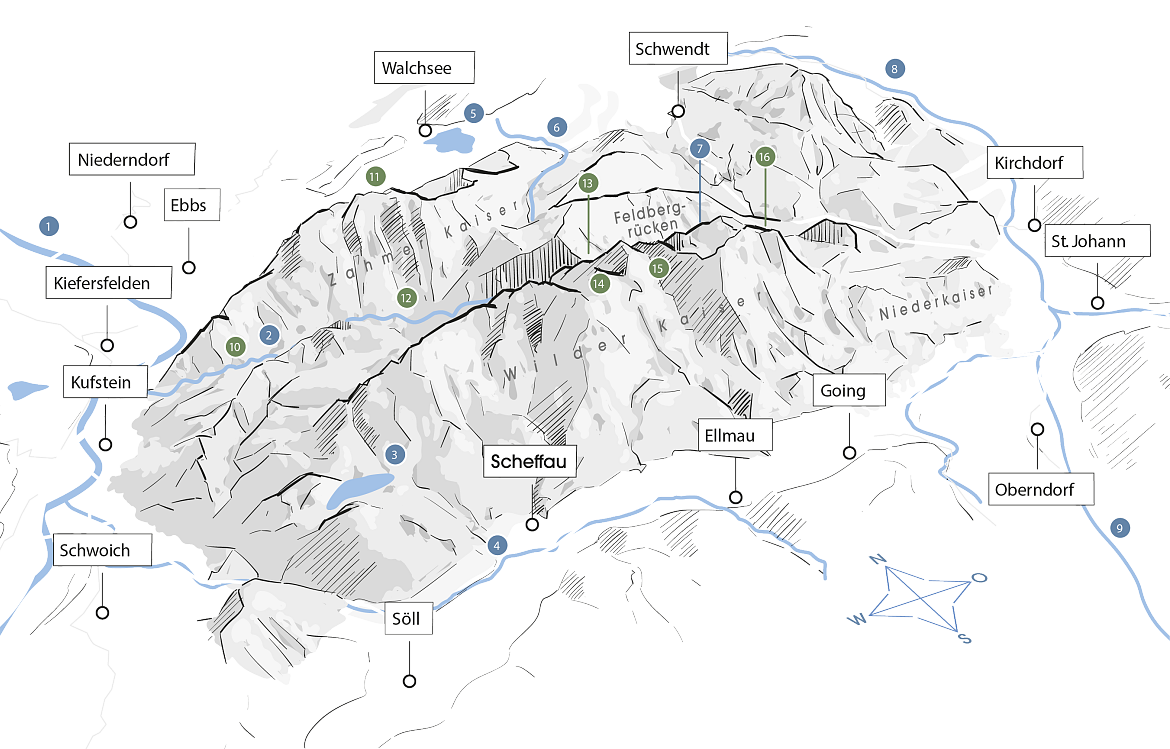

Each and every individual can make a decisive contribution to preserving the beauty of the Kaisergebirge nature reserve.

Thank you for taking care of nature and fellow human beings and avoiding noise - for a good coexistence.
People use the resources of the area and it serves as a recreational and leisure space. For animals and plants, on the other hand, the Kaisergebirge is their habitat. In order to preserve it, we all need to be respectful and attentive.
Thank you for leaving no trace and taking your trash home again. Avoid garbage if possible by using reusable bottles and snack boxes. Please also use the toilet facilities available at the parking lots and refreshment stops.
Even a single cigarette butt can contaminate 40 to 60 liters of water, containing up to 7,000 pollutants such as arsenic, lead and nicotine. Trash can be considered food by animals, clog their stomachs, and generally increase the risk of injury and lead to poisoning.
Thank you for staying on marked trails, respecting signs, and not taking shortcuts.
Leaving marked trails leads to the destruction of plants, meadow and forest soils. As a result, heavy rains cause erosion damage that endangers safety. Wildlife is also increasingly disturbed by shortcuts.
Thank you for keeping your dog on a leash and keeping your distance from grazing livestock and wildlife. Please also be considerate of others and dispose of your dog's waste properly in the valley.
The dog poses a potential threat and stress to wildlife and grazing animals (especially mother cows). Dog waste can also contain dangerous pathogens and contaminate groundwater.
Thank you for being considerate of wild animals - observe them only from a great distance, do not chase them under any circumstances, stay calm and quiet, and especially avoid twilight hours and nighttime. Wild camping is also prohibited.
Many wild animals change their behavior as a result of increasing disturbances. They shift their search for food to the twilight or night hours and take refuge in quiet dugouts or the protected forest. If they are disturbed here as well, this increases their stress level, restricts their habitat and food intake, and has an impact on the mating and setting season, their energy balance and their health.
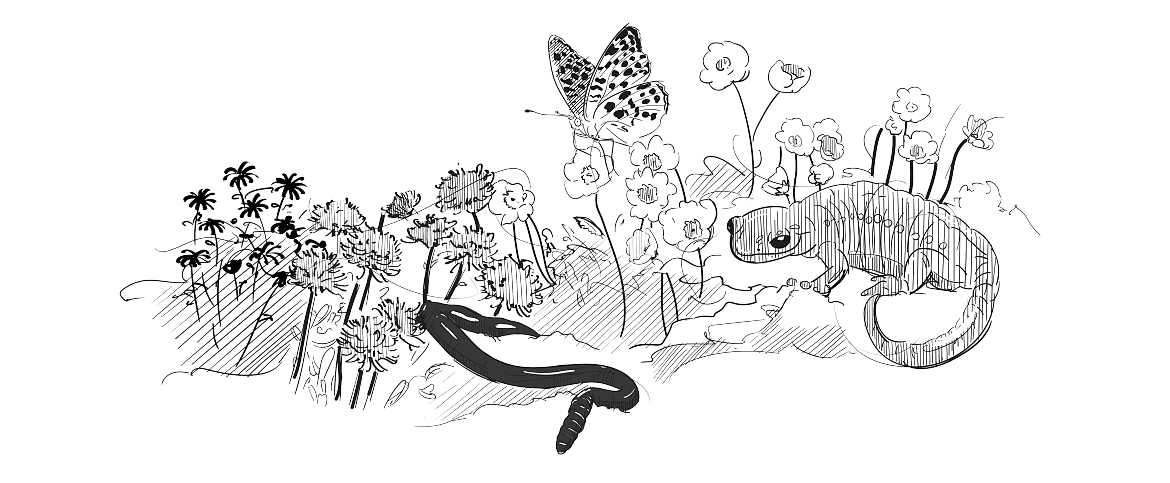
The Kaiser Mountains - a habitat for many
The nature reserve Kaisergebirge has a very high biodiversity and is the basis of life for a variety of plants and animals.
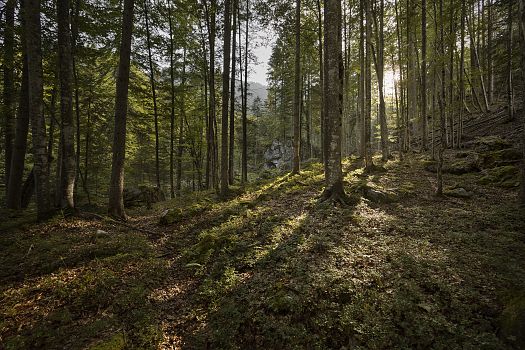
Forest habitat
A variety of forest communities are at home in the Kaiser Mountains, with the northern alpine spruce-fir-beech forest being the most widespread. Like the sycamore-ash forest, it is found below the tree line, which makes it one of the forest communities of the montane stage. The forests in the Kaiser Mountains serve as a habitat and retreat for numerous animals, such as the pygmy owl, the black grouse and the capercaillie, or the alpine longhorn beetle. Apart from that, the forest has a valuable protective (against avalanches), useful (wood as raw material) and recreational function.
Do you already know the approx. 300 years old silver fir on the Steinberg?
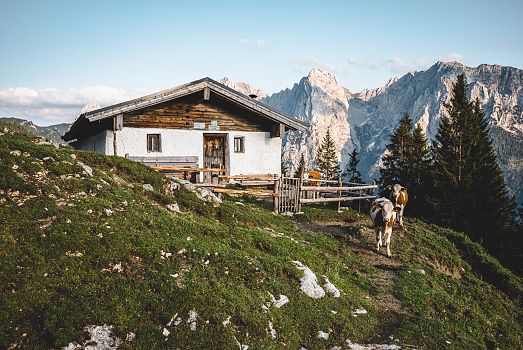
Habitat alpine pasture
30 alpine pastures are anchored in the Kaiser Mountains and contribute to the close interlocking of extensive cultivated landscapes and near-natural landscapes. As a result, a variety of different pasture and grass communities have developed. Thus, the nature reserve contains nutrient-rich mowing meadows, pastures, turf, dry, semi-dry and rough grasslands. A large number of insects in particular make an important contribution to the local biodiversity.
? Did you know that over 10 species of grasshoppers, 30 species of cicadas and 50 species of bugs can live in a single rough pasture?
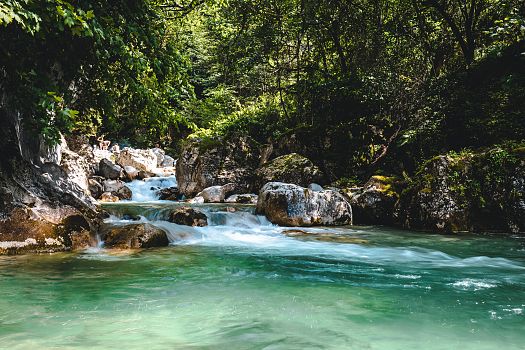
Habitat water and moor
Bogs in the Kaiser Mountains provide habitats for highly specialized animals and plants. In the moor, for example, the sundew, the marsh clubmoss, mountain newts and various dragonfly species can be discovered. Kufsteinerland is also home to one of the most significant water sources in Tyrol: the Hofinger Spring. It has been supplying the town of Kufstein with drinking water since 1893.
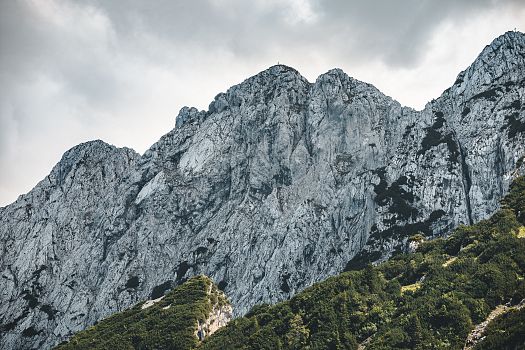
Rock habitat
The Kaisergebirge is known for its pointed rock formations and the up to 1000m high drop-offs. This unique rocky landscape is not only a fantastic climbing area, but also the habitat of specialized plants and animals. Thus, chamois, alpine salamander, ptarmigan and golden eagle can be observed at a distance, as well as admire the dwarf alpine rose or the alpine common cress.
"Rocks are habitats with extreme environmental conditions. Plants and animals that can settle here are particularly adapted specialists that have learned to cope with these conditions. They are particularly susceptible to disturbance and react sensitively. Therefore, we should be considerate of them and observe rules of conduct - such as avoiding twilight hours, staying on trails, and keeping quiet."
~ Otto Leiner, Department of Environment, Province of Tyrol
"Long after I am gone, you will still be emperor!"
cried Emperor Charles V, according to tradition, at the sight of the Emperor's Mountain.
History
Geological formation of the Kaisergebirge
The Kaisergebirge is a chain mountain range that belongs to the northern limestone Alps. In the upper, wall-forming areas it is mainly composed of Wetterstein limestone.
In the area of tropical reefs and lagoons these rocks were formed about 220-240 million years ago . Due to mountain building, these rocks were brought into their present position over millions of years. The present form was formed in the course of the ice age.
The Tischoferhöhle as a witness of time
In the area of the Kaiserbachklamm the impressive Tischoferhöhle reveals itself. Finds of tools and skeletal remains of humans, bears and other animals in this cave indicate that it was already visited by people in the Neolithic Age. Thus, this place is considered one of the oldest proven sites of human
sites of human settlement in the Alpine region.
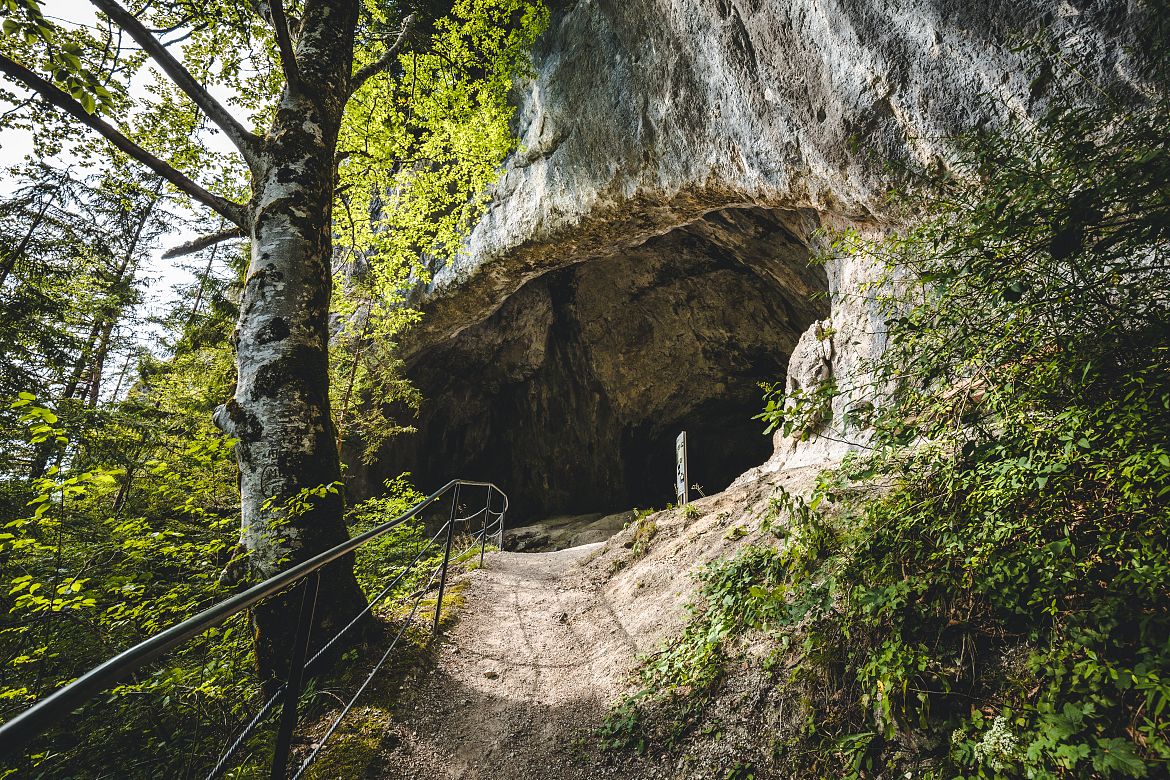
On 29 April 1963, the Kaisergebirge was declared a nature reserve. The initiator, Franz Schwaighofer, the owner of Berghof Pfandl in the Kaisertal valley at the time, had the following reasons: to protect the flora and fauna with all their local peculiarities, to prohibit any motorised traffic or (further) cable car construction, to preserve this unique mountain world for future generations and to preserve an "oasis of peace" in a time and society characterised by economic growth.
Learn more about the history of the nature reserve's origins
Background: How the Kaiser Mountains became a nature reserve
"Cable car operators versus conservationists", "business people versus people seeking peace and quiet", "farmers versus mountaineers" - these supposed conflicting parties and their disputes could just as well come from a current article on the subject of "Tourism in the Alpine Region". In fact, however, they describe events that already took place at the end of the 1950s around the Kaisergebirge, especially in the town of Kufstein. At the instigation of the owner of the "Pfandl" mountain farm, Franz Schwaighofer, a political and social debate began at that time about placing the Kaisertal and subsequently the entire Kaisergebirge under nature conservation. This debate was to occupy the local council, but also scientists, associations such as the Alpine Club or Friends of Nature, the Association for Local History and Heritage Protection in Kufstein, but also the German Nature Protection Ring or the Association for the Protection of Alpine Plants and Animals in Munich, as well as the political leaders of the Tyrol from 1959 to 1963.
"The undersigned hereby submits a motion to declare the area of the Kaisertal in its entire extent from the Kaiserbach outlet in the Sparchen to Stripsenjoch, including the Zahme and Wilder Kaisergebirge, as a nature conservation area, with special regard to the fact that this area should remain completely closed to general motorised traffic for all time to come and that any further development by road or path construction within the Kaisertal should only be permitted to the extent that it would be required by purely forestry needs." (...) "It has always been a popular destination for all friends of a quiet alpine world, high tourists, hikers or those seeking recreation, and especially in today's time of traffic congestion, noise and the other 'blessings of civilisation', it forms a place of refuge which they can rarely find elsewhere, or only under greater hardship. (...)" wrote the applicant in 1959.
Debate also outside the municipal council
This motion was followed by extensive correspondence from all those involved, in which at first only benevolent comments were received, all of which were in favour of protecting nature and creating or preserving an ideal "oasis of peace". Nevertheless: In the municipal council meeting of 9 July 1960, the motion to "place the Kaisergebirge under nature protection" was initially rejected by 10:9 votes, as economic disadvantages were feared as a result. The negative vote caused consternation, especially in mountaineering circles, and what followed was a so-called "press battle" on both sides of the border with Bavaria. Around 70 statements and letters of protest were also sent to the municipal office, which boosted the supporters in the municipal council and ensured that another vote on the issue on 3 November 1960 was in favour of an application to the Tyrolean provincial government to create a nature reserve.
It would be beyond the scope of this article to describe the entire political process - but all those interested should definitely read the text "Naturschutzgebiet 'Kaisergebirge' Ja oder Nein?" (Nature reserve 'Kaisergebirge' Yes or No?) by Prof. Kurt Fischer, the nature conservation commissioner of the district of Kufstein at the time, from 1962; because, as mentioned at the beginning, the content has lost none of its topicality and will certainly cause a smile or two among interested readers.
Referendum on 5 November 1961
In any case, the result of the political and social debate surrounding the nature reserve was that on Sunday 5 November 1961 a referendum was held on the following question: "Should the municipal council resolution of 3 November 1960 concerning an application to the Tyrolean provincial government for the issuing of an ordinance in accordance with § 4 of the provincial law LGBl. No. 31/1951 with the content of making the area of the Kaisergebirge a nature reserve be repealed?" Logically, the question could only be answered with "yes" or "no".
In the run-up to the referendum, postal mailings were sent to Kufstein households by both supporters and opponents of nature conservation. In the run-up to the vote, however, it was already foreseeable that the supporters would very probably prevail, because non-voters would count as "no votes" - i.e. as votes against the repeal of the relevant municipal council resolution and for the creation of the Kaisergebirge nature reserve - according to the legal regulations in force at the time.
The result: out of 7,124 eligible voters, 587 cast their votes. Of these, 585 were valid, 125 voted "yes" (i.e. against the nature reserve) and in contrast 460 voted "no" (i.e. for the nature reserve). It was thus clear that the Kufstein municipal council would not overturn its decision of 3 November. A few statements and discussions between the Office of the Tyrolean Provincial Government and the municipalities affected by the nature reserve later, the time had come: in its ordinance of 29 April 1963, the Kaisergebirge was declared a nature reserve.
Then as now: guests seek connection with nature
In his preface - this text is also recommended to the interested public - to the special edition "The nature reserve 'Kaisergebirge'", the Vice-President of the Tyrolean Parliament, Dr. Karl Erlacher, wrote the following lines in 1965: "Nature conservation is a human obligation and spiritual enrichment. In the age of massification and modern industrial society, we need the interaction between man and nature more than ever. Where else could we draw the inner strength to be human than from nature? Nature conservation can therefore not only be the task of a few special-purpose associations and idealists; the protection of nature is a state-political duty that no politically responsible person can and may evade. (....)
I do not want to claim that nature conservation does not play a role in the tourism industry. How many guests today, tired of the noise of the big city, seek a connection with nature and the lonely mountain village. Perhaps they will soon realise that the "Kaiser Mountains" nature reserve is an attraction for everyone. (...)"
And he was to be absolutely right about that - and possibly for longer than anyone would have dared to hope in the 1960s, given the nature reserve's turbulent history. For 60 years later, nature conservation is a central concern of the "tourism industry", which today is organised in tourism associations (TVB); the Kaisergebirge is still a centre of attraction for all those seeking peace and tranquillity in nature. Reason enough for the TVBs based around the Kaisergebirge - Kufsteinerland, St. Johann and Wilder Kaiser - to jointly reflect on this "treasure" and its protection on the occasion of the 60th anniversary.
Sources and further information:
Kurt Fischer: Nature Reserve Kaisergebirge "Yes or No?" (1962)
Dr Karl Erlacher: Foreword to the offprint "Das Naturschutzgebiet 'Kaisergebirge'" (1965)
